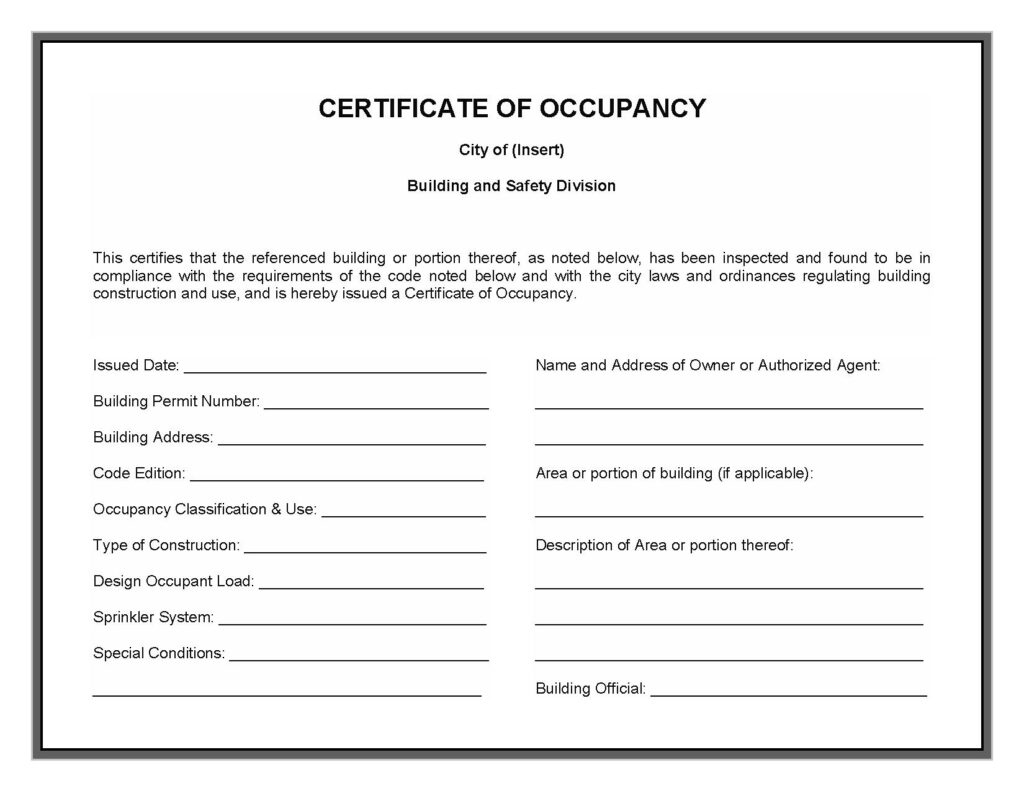
In order for a building or structure to be occupied, or a change in use/occupancy is to be made to an existing building, it must first be issued a Certificate of Occupancy. A Certificate of Occupancy is the final step to ensure a building is safe to occupy.
When work on a building or structure requires a permit, it goes through plan review and inspections. Afterwards when the project has been completed and the building is safe to occupy, a Certificate of Occupancy shall be issued to the building or portion thereof.
Therefore it is unlawful to occupy a building unless a Certificate of Occupancy is issued. The Certificate of Occupancy is used as a tool to help regulate and control the specific use and occupancy of buildings and structures within a jurisdiction to ensure safety and compliance with the code.
Per Section 111 of the International Building Code (IBC), the Building Official has the authority to issue a certificate of occupancy. The Building Official is the officer, designated authority, or authorized representative in charge with the administration and enforcement of the code.
A building cannot be used or occupied until the Building Official inspects the building and finds no violations of the code or other laws that are enforced by the authority having jurisdiction. Once all inspections have been completed and no violations are found, the Building Official shall then issue the certificate of occupancy.
Although the actual look, size, or design is not outlined in the code, section 111.2 of the International Building Code (IBC) provides a very specific list of items/information that must be placed on the Certificate of Occupancy. These items are listed as followed:
Given the list of items noted above, here is a visual of what a Certificate of Occupancy is expected to look like. Again the look of it is not defined in the code, just the information that needs to be on it.

Section 111.4 of the International Building Code (IBC) sets the parameters of when a Certificate of Occupancy can be revoked. The Building Official has the authority to suspend or revoke a Certificate of Occupancy in writing if wherever the certificate is issued in error or if incorrect information was provided or where determined that the building is in violation of any provision of the code or regulation.
A lot of times you will find that a building is being used for a purpose other than what it was intended for when approved for occupancy.
If a change of use or occupancy was made other than what it was originally approved for, the Building Official can revoke or suspend the buildings Certificate of Occupancy until the unpermitted use is discontinued or alterations are made to the building that would allow the new use.
The alteration, if allowed, is done so first by providing plans for review and inspections to show compliance with the code.
Section 111.3 of the IBC gives the Building Official the authority to issue a Temporary Certificate of Occupancy before the entire work of the permit has been completed. This can only be done if the building can safely be occupied. Since this is a temporary certificate, the Building Official shall set a time period of when it is valid.
This section is primarily intended for those situations where a portion of a building is intended to be occupied prior to occupying the entire building. When partial occupancy is requested before the entire work required by the permit is completed, a Temporary Certificate of Occupancy may be issued by the Building Official as long as the occupied portions are provided with the minimum level of safety required by code.
* Reference Source – 2015 International Building Code – [Buy on Amazon]
Related Articles to Read: